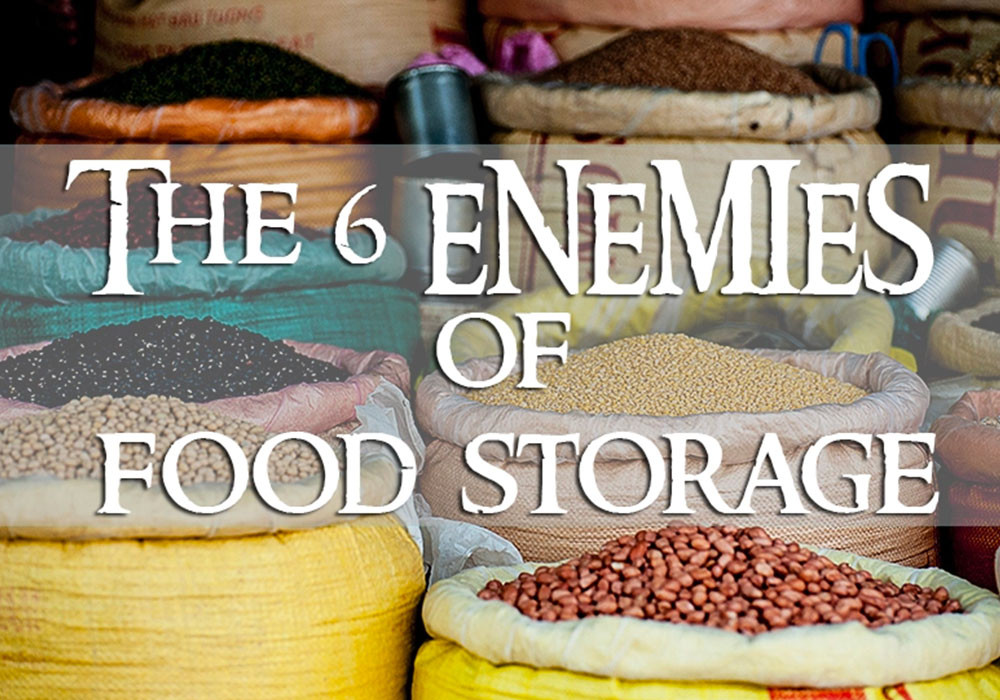The 6 Enemies of Food Storage
Posted by PackFreshUSA on Sep 21st 2017
Storing food for long term could be a daunting task. Long term food storage is not as easy as short-term food storage, where you fill your pantry with food that is only intended to last you a few weeks or months. Things get a little bit more complicated when you plan on storing food for more than a year or two! Aside from figuring out what and how much food you will be storing, there are other factors to take into consideration.
These are factors are commonly known as the “6 Enemies of Food Storage”. Each of these factors are interrelated in such a way that if your food storage becomes exposed to them they will ultimately become detrimental to your food storage supply. Although, it may be difficult to fully avoid some of these factors, it is important to know their harmful properties.
- Oxygen
We usually speak very highly of oxygen – after all it is a necessity of life. But it is also very destructive, changing things around us at a molecular level. Oxygen either directly causes food spoilage through oxidation or it supports other organisms that ruin our food by being one of their necessities of life too. Fortunately, the use of oxygen aborbers can suck out the oxygen in your food containers, leaving only product and nitrogen (which is not harmful).
- Moisture
Humidity and condensation are the most common forms of moisture. Moist or even slightly damp food becomes the breeding grown for molds and bacteria, causing spoilage. Spoiled food is no longer edible and if consumed will cause illness and possibly other health problems. In addition, moisture can cause packaging to break down, exposing the food to further degradation. The ideal level of humidity for your stored food is 15% or less. If avoidable, it is best to package your food on a day with low humidity and if necessary use desiccants in conjunction to your oxygen absorbers. Read our post regarding Oxygen Absorbers vs. Desiccants for more information on this topic.
- Light
Light can cause foods to spoil faster. Exposure to sunlight, fluorescent light, or incandescent light can cause photodegradation, degrading its nutritional value, taste, and appearance. This is especially true when it comes to the fat-soluble vitamins such as Vitamins A, D and E as well as proteins. Using Mylar bags and storing in a dark cool place will help prevent exposure to light.
- Pests
Pests, such as bugs or rodents, are not only a nuisance, but also a major factor to eliminate when storing food for long-term. It is important to be aware of the pests that are particular to your geographical climate and further, that you set a barrier between your food and the critters. In addition to a physical barrier, the use of oxygen absorbers will eliminate the oxygen (air) that most pests need to survive.
- Temperature
Ideally, temperatures between 40 degrees and 70 degrees Fahrenheit are best for long-term storage. Anything warmer or cooler results in loss of color, nutrition, texture and taste. It is also important to keep a constant temperature. So if you have a location where the temperature is 40 degrees one day and 70 the next, there is going to be some loss in quality and shelf life.
- Time
Time is the final enemy of food storage. While there are many items that have an extended shelf life of 20 or 30 years, unless they are properly packaged and stored, the ideal shelf life will be considerably less. Over time, food will degrade in nutritional value, appearance and taste. Therefore, it is important to take into consideration what you will be storing and how it will be stored. PackFreshUSA offers a Century line of Mylar bags that guarantees your food will last well over a century!

